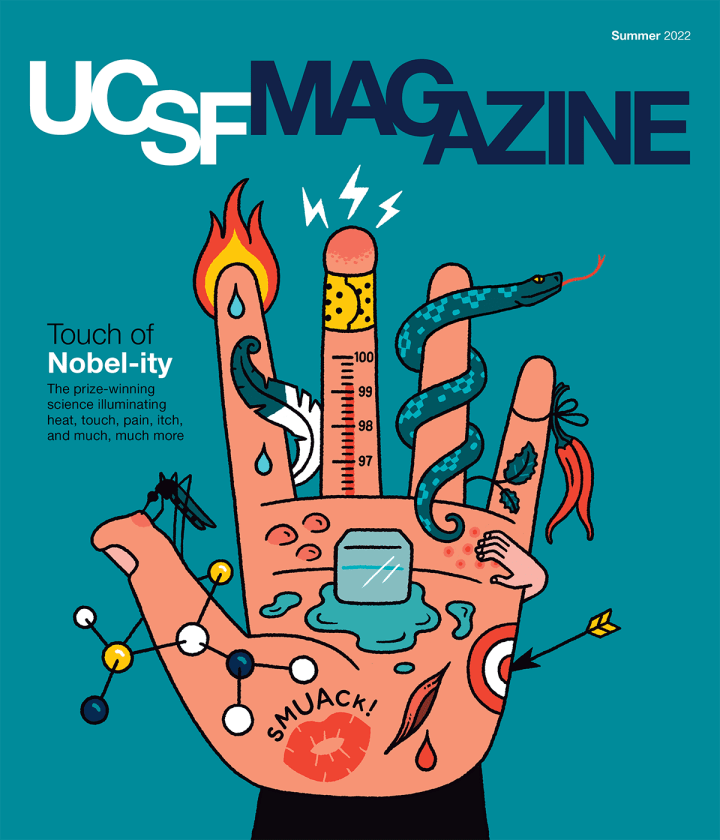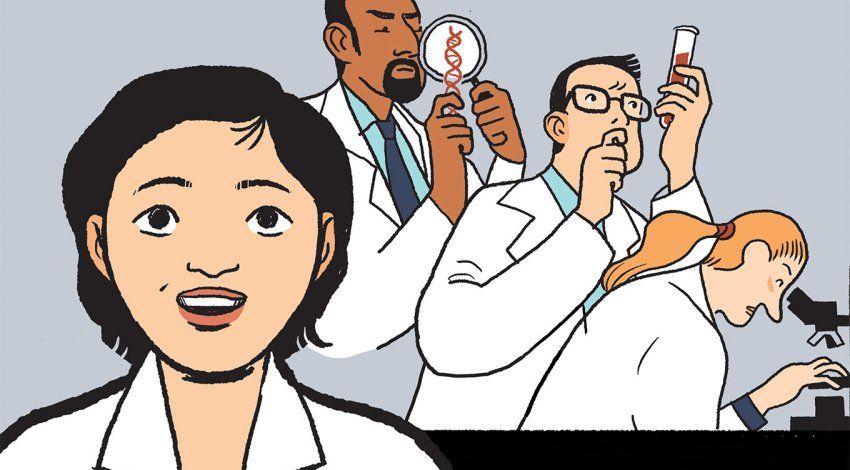
The Case of the Curious Clots
A less meticulous physician might have mistaken the man’s complaints for run-of-the-mill vascular disease. Not UCSF resident Ori Lieberman.

On a foggy day last June, a 57-year-old man limped into the emergency department at the San Francisco VA Medical Center. His legs had been hurting for weeks, he told Ori Lieberman, MD, PhD, a UCSF resident who had just reported to the hospital for his first day of training. Initially, it sounded like a classic case of peripheral artery disease, in which fatty deposits in the blood vessels cause poor circulation. Sure enough, the patient’s legs showed the hair loss and shiny skin characteristic of the condition.
But Lieberman and the other doctors on his team – Professor Kathryn Eubank, MD, and Maria Duarte, MD, a fellow – hesitated to send the man off with just a prescription for blood thinners and a recommendation to get more exercise. He had other symptoms that didn’t add up: a recent loss of about 20 pounds, for instance, and signs of systemic illness – fever, an elevated heart rate, and a high white blood cell count. He also mentioned having experienced some chest discomfort and nausea the week before.
An EKG confirmed the team’s worries: The man had suffered a heart attack. Could that explain his leg pain and flu-like symptoms?
It’s common during a heart attack for a blood clot to form in one of the heart’s lower chambers; when the heart starts beating again, the pressure can break up the clot and send pieces of it into the limbs and organs, causing pain and inflammation. A CAT scan revealed clots in the man’s legs and one in his kidney. Surgeons removed a particularly large clot from his leg and placed a stent in his heart to prevent another attack.
But the medical team believed the clots were a red flag. Oddly, some showed signs of having formed recently, while others were clearly much older, so the team concluded that they couldn’t all have originated from a single heart attack. An echocardiograph to image the patient’s heart added yet another surprise – no evidence of clotting there. “Then we were really stumped, because we didn’t know where the clots in the rest of his body were coming from,” Lieberman recalls.
Maybe, he realized, the heart attack wasn’t the main culprit but a symptom of a larger underlying problem. As the man recovered from his surgeries, Lieberman noticed the level of platelets in his blood rising. Platelets are key in clot formation, and their numbers can go up due to many causes, including simple ones like stress. But Lieberman, suspecting a more serious cause, ordered an extensive workup – including a genetic test, which revealed a mutation in a gene called JAK2 that’s linked to some blood cancers. A biopsy of the man’s bone marrow finally gave a clear diagnosis: essential thrombocytosis, a rare cancer in which the body overproduces platelets.
There’s no cure, but the condition can be treated with medication. Without it, Lieberman says, the man almost certainly would have ended up back in the hospital with new clots, a more severe heart attack, or worse. Instead, as of December, at his latest checkup at the VA, he remained clot-free.


